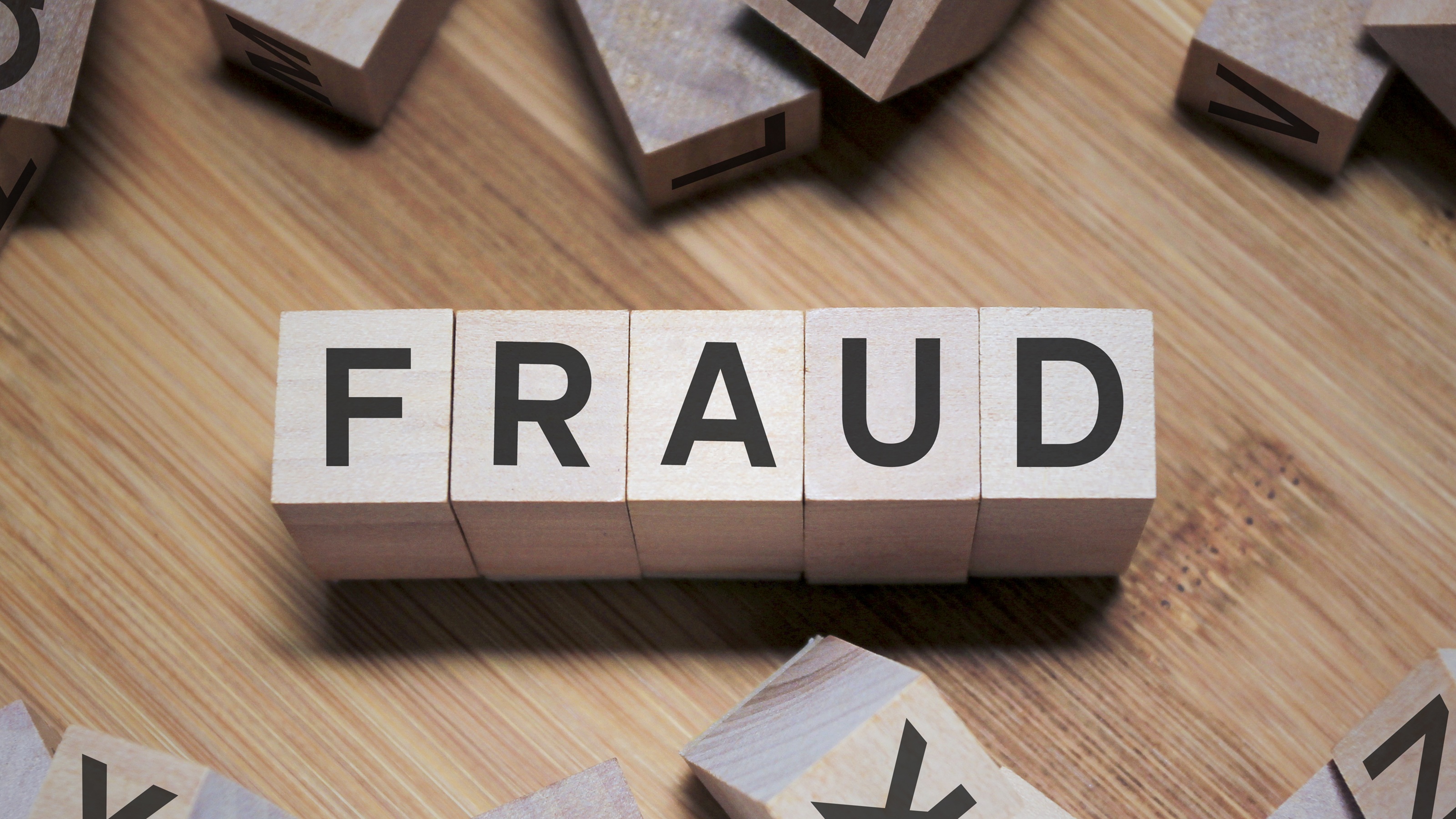Extreme Loss Aversion is Not a Retirement Strategy
If you quake at the thought of losing money in the stock market, you might not be thinking about investing in the right way, and left unchecked, the fear could crumble your retirement plans.

Nobody wants to lose money, and loss aversion is a prudent part of an investment strategy. But when it goes to extremes, it can hurt retirees more than it helps.
When planning for their futures, many retirees can succumb to Extreme Loss Aversion, clinging to their money like a passenger on the Titanic holds onto a floating plank of wood.
There are several reasons for this:
From just $107.88 $24.99 for Kiplinger Personal Finance
Become a smarter, better informed investor. Subscribe from just $107.88 $24.99, plus get up to 4 Special Issues

Sign up for Kiplinger’s Free Newsletters
Profit and prosper with the best of expert advice on investing, taxes, retirement, personal finance and more - straight to your e-mail.
Profit and prosper with the best of expert advice - straight to your e-mail.
1. This is all you’ve got. Extreme Loss Aversion can come from a realization that this is it. They have to make this pile of money last the rest of their lives. There is no more coming in. They have retired and now the reality of that fact hits them and they dare not risk a penny of their money for fear of losing it.
2. Family members can also influence retirees. With the best of intentions, adult children of retirees can talk their parents into “staying safe.” Concerned for their parents’ financial well-being, they warn them of the dangers of investing and how important it is to preserve what they have.
3. Lack of education. For many retirees, this is the first time they have ever had so much money. If they take a rollover from their 401(k) when retiring, their IRA may have swollen from $25,000 to $250,000, $500,000 or even $1 million overnight, and they have no idea what to do. Many retirees don’t know where to start. They have not been educated on how to create an income portfolio; they haven’t even been educated on what an income investment is. So instead of educating themselves, they freeze and do nothing.
4. Previous bad investments. Just about everyone has made a bad investment at some point in their investing lives. But if it is one of an investor’s first investments that goes bad, it can leave the person with an investment phobia, where they think every investment will perform like that one bad one. “I lost money in XYZ when I was 25, so I’m never investing again.”
5. Not understanding the difference between loss and volatility. Values go up and down, but some retirees don’t understand that. Some retirees think if an investment falls, they are going to lose everything. They can’t separate the volatility of an investment with its potential to go completely to zero. When they receive their monthly investment statement after a month where the market was down a bit, they don’t see that their portfolio is down $1,000, they see it as they have lost $1,000. It is a savings account mindset. If your savings account declined by $1,000, you know it’s not coming back. They don’t understand that investments can come back up. They picture the account dropping every month until there is nothing left.
6. Don’t know who to trust. Many retirees have no idea who they can and cannot trust. And with the financial world the way it is today, who can blame them? Bankers, brokers, insurance agents and partnership salesmen all make their products sound good. But they know that their Uncle Charlie always complains about his annuity, and cousin Joe complains about his broker, and don’t even bring up banks in front of their sister Ellen! So who do they trust?
Why is Extreme Loss Aversion not a Strategy?
First, a strategy implies action. Extreme Loss Aversion puts your money in cash or its equivalent forever. Second, as a retiree, you will need to live off the income generated by your money. If it is in cash, or something similar, such as a three-month CD or T-bills or a money market account, it isn’t earning very much. In many cases, not enough to live off. Let’s say you need $3,000 per month from your money, but it only earns $500 per month. You will have to dip into your principal for the rest. This depletion of principal also reduces your future income. It is a self-fulfilling prophecy, you will guarantee yourself that you will lose money every month.
The next two issues go hand in hand. How long do you plan on living? At the rate you are going in the example above, you are depleting your assets by $30,000 per year. If all you had was $300,000, in less than 10 years, you are broke. Then what?
For financial planning purposes, we always calculate that the investor will live to their mid-90s. The life expectancy for someone 65 years old today is 84.3 for a man and 86.6 for a woman, according to the Social Security Administration. So you have to plan to live another 20 years after retiring.
The reason I said less than 10 years (above) is because we didn’t take inflation into account: $30,000 today is about $38,400 in 10 years at only 2.5% inflation. Yes, inflation is a retiree's enemy. If you leave your money in cash-type investments, you may deplete your nest egg even faster, thanks to inflation.
Solutions
1. Guaranteed Income for Life. Someone who is risk averse should be in favor of investments that guarantee a lifetime income. Annuities offer this. No, we are not recommending that retirees put all of their assets into annuities, but it is a good place to put some money to increase income and give them the assurance that they will always have a source of income.
2. Education. This should start well before retirement, but if it hasn’t, don’t worry, it’s not too late. There are literally hundreds of websites that investors can access that will give them a good, basic education on investing. But beware, many sites have an agenda. It is best to look for neutral sites that have a variety of sources of information. At a minimum, retirees should learn about the various types of investments (stocks, bonds and commodities) and the various vehicles (mutual funds, ETFs, IRAs)—and what the purpose is of each. For instance, a mutual fund is not an investment, it is an investment vehicle that holds the investments, whether they be stocks or bonds or both.
3. Stay with familiar names. Even a retiree who is suffers from Extreme Loss Aversion will recognize names like Coca-Cola, AT&T, Ford and Exxon. Someone who is extremely risk averse should be able to see that companies like these are not about to go out of business. They may have their ups and downs, but to counter that, they should focus on the number of shares they have, not the price per share. No matter what the price is, they have 100 shares of Coca-Cola or AT&T. Extremely risk averse retirees should avoid companies they don’t recognize. Experimental Biotech Inc. or Wiz-Bang Internet are the types of companies the extremely risk averse should avoid.
4. Have some short-term successes with short-term bonds. Those with Extreme Loss Aversion are ready to bolt at the slightest disappointment. It would be a good idea to start slow. Buy some short-term corporate bonds of companies they are familiar with. Maturities of no more than a year. The idea is to get them over their risk aversion. Let them see successes. The bond matured at the price it was supposed to and when it was supposed to. After they get used to that, start sprinkling in some longer maturities and even some dividend-paying stocks.
5. A Financial Plan. Having a road map to the future can alleviate many of the unknowns. Will they have enough money to live on? Will the surviving spouse have enough money? Will they be able to leave any money to their kids? Will they have to sell the house? Can they take trips? Will they be able to live as they are currently? What will they have to give up? Will they have to get a job? How much will inflation drive up their expenses in the future?
Questions like these can cause some retirees to freeze and do nothing or continue as if nothing has changed, putting on blinders and not wanting to deal with the questions.
But a financial plan can answer these questions. It can unfreeze the frozen retiree and take the blinders off others. It can show them what happens if they stay in cash or invest in appropriate strategies and investments. It can take away many of the unknowns and show them that maybe things aren’t quite as bad as you thought.
Conclusion
We have found that many retirees with Extreme Loss Aversion, when given the right education, investments and strategies can get over their fears and benefit from investing properly.
Sometimes though, the extremely risk averse will stay that way. To them, I say, we have a rule called the Sleep Factor—if it makes you lose sleep worrying about it, don’t do it.
Third-party posts do not reflect the views of Cantella & Co Inc. or Cornerstone Investment Services, LLC. Any links to third-party sites are believed to be reliable but have not been independently reviewed by Cantella & Co. Inc. or Cornerstone Investment Services, LLC. Securities offered through Cantella & Co., Inc., Member FINRA/SIPC. Advisory Services offered through Cornerstone Investment Services, LLC's RIA.
Profit and prosper with the best of Kiplinger's advice on investing, taxes, retirement, personal finance and much more. Delivered daily. Enter your email in the box and click Sign Me Up.

In 1999, John Riley established Cornerstone Investment Services to offer investors an alternative to Wall Street. He is unique among financial advisers for having passed the Series 86 and 87 exams to become a registered Research Analyst. Since breaking free of the crowd, John has been able to manage clients' money in a way that prepares them for the trends he sees in the markets and the surprises Wall Street misses.
-
 Stocks End Volatile Year on a Down Note: Stock Market Today
Stocks End Volatile Year on a Down Note: Stock Market TodayAfter nearing bear-market territory in the spring, the main market indexes closed out the year with impressive gains.
-
 How We Manage Our Finances Together: 'When You Keep Score, You Can End Up Resentful'
How We Manage Our Finances Together: 'When You Keep Score, You Can End Up Resentful'Douglas Boneparth, a certified financial planner, and his wife, Heather Boneparth, speak with Kiplinger about couples managing finances.
-
 I'm 45 and I've barely invested in the stock market. I recently inherited $50,000. What should I do?
I'm 45 and I've barely invested in the stock market. I recently inherited $50,000. What should I do?What should you do with a big inheritance? We asked a financial expert for advice.
-
 7 Creative Ways to Spend Less and Save More In Retirement, Courtesy of a Financial Pro
7 Creative Ways to Spend Less and Save More In Retirement, Courtesy of a Financial ProWorried you won't have enough money later in life? Try redesigning your vision of retirement, and you may find your savings go further than you thought.
-
 I'm an Annuities Pro: This Is How You Can Cover the Income Gap While Your Social Security Benefits Grow
I'm an Annuities Pro: This Is How You Can Cover the Income Gap While Your Social Security Benefits GrowTaking Social Security later results in higher future income, but that can create an income gap. Annuities can boost income until you file for benefits.
-
 I'm a Financial Pro: You Really Can Make New Year's Money Resolutions That Stick (and Just Smile as Quitter's Day Goes By)
I'm a Financial Pro: You Really Can Make New Year's Money Resolutions That Stick (and Just Smile as Quitter's Day Goes By)The secret to keeping your New Year's financial resolutions? Just make your savings and retirement contributions 100% automatic.
-
 Domestic vs Offshore Asset Protection Trusts: A Basic Guide From an Attorney
Domestic vs Offshore Asset Protection Trusts: A Basic Guide From an AttorneyLearn the difference between domestic asset protection trusts and foreign or offshore asset protection trusts to help you decide what might work best for you.
-
 As We Age, Embracing Our Own Self-Doubt Can Be a Gift: A Cautionary Tale About Elder Financial Abuse
As We Age, Embracing Our Own Self-Doubt Can Be a Gift: A Cautionary Tale About Elder Financial AbuseAn aging couple hired a company that illegally required large deposits, and then they decided to stick with the company even after an employee stole from them.
-
 Now That You've Built Your Estate Planning Playbook, It's Time to Put It to Work
Now That You've Built Your Estate Planning Playbook, It's Time to Put It to WorkYou need to share details with your family (including passwords and document locations) and stay focused on keeping your plan up to date.
-
 I'm a Wealth Adviser: These 10 Strategies Can Help Women Prepare for Their Impending Financial Power
I'm a Wealth Adviser: These 10 Strategies Can Help Women Prepare for Their Impending Financial PowerAs women gain wealth and influence, being proactive about financial planning is essential to address longevity and close gaps in confidence and caregiving.
-
 I'm a Financial Planning Pro: This Is How You Can Stop These 5 Risks From Wrecking Your Retirement
I'm a Financial Planning Pro: This Is How You Can Stop These 5 Risks From Wrecking Your RetirementYour retirement could be jeopardized if you ignore the risks you'll face later in life. From inflation to market volatility, here's what to prepare for.